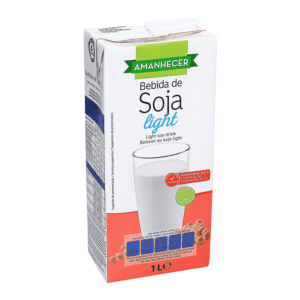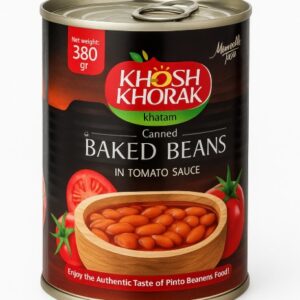
Top 10 Wine-Producing Countries: Masters of the Vineyard
Wine is more than just a beverage—it is a cultural icon, an agricultural achievement, and a symbol of heritage for many nations. With over 250 million hectoliters of wine produced globally each year, the wine industry supports over 36 million jobs worldwide and contributes significantly to the $364 billion global wine market as of 2023. This market is projected to grow to $528 billion by 2032, with a compound annual growth rate (CAGR) of 4.3%.
Europe remains the dominant player, accounting for 58% of global wine production, led by countries like Italy, France, and Spain. However, New World wine producers such as the United States, Argentina, and Australia are rapidly gaining market share, leveraging technological advancements and innovative winemaking techniques.
The global wine export market reached a value of $42 billion in 2022, with over 10 billion liters of wine shipped internationally. Major exporters like Italy, France, and Spain account for over 60% of this trade. Meanwhile, emerging markets like China and India are experiencing double-digit growth in wine consumption, reflecting a shift in global consumer preferences.
These numbers highlight the significance of wine production not just as a culinary art but as a cornerstone of the global economy. Let’s explore the Top 10 wine-producing countries, each playing a unique role in shaping the future of winemaking.

| Top 10 Wine-Producing Countries
1. Italy
Annual Production: ~49.8 million hectoliters (2022)
Why It Stands Out:
Italy is the world’s largest wine producer, known for its diversity and quality. The country boasts over 350 DOC (Denominazione di Origine Controllata) and DOCG (Denominazione di Origine Controllata e Garantita) wines, ranging from bold reds like Barolo to sparkling Prosecco.
Key Varietals: Sangiovese, Nebbiolo, Trebbiano
2. France
Annual Production: ~45.6 million hectoliters (2022)
Why It Stands Out:
France is synonymous with fine wine, home to iconic regions like Bordeaux, Burgundy, and Champagne. Its focus on terroir and appellation systems ensures quality and consistency.
Key Varietals: Merlot, Chardonnay, Sauvignon Blanc
3. Spain
Annual Production: ~35.7 million hectoliters (2022)
Why It Stands Out:
Spain boasts the largest vineyard area in the world, producing high-quality reds, whites, and fortified wines. Rioja, Ribera del Duero, and Jerez are renowned globally.
Key Varietals: Tempranillo, Garnacha, Albariño
4. United States
Annual Production: ~22.4 million hectoliters (2022)
Why It Stands Out:
California accounts for over 85% of U.S. wine production, with Napa Valley leading the way. The U.S. excels in innovation, creating modern blends and investing in sustainable practices.
Key Varietals: Cabernet Sauvignon, Zinfandel, Chardonnay
5. Australia
Annual Production: ~12.7 million hectoliters (2022)
Why It Stands Out:
Australia’s wine regions, such as Barossa Valley and Margaret River, produce rich, full-bodied wines that have captured global attention. The country’s exports are driven by Shiraz and Chardonnay.
Key Varietals: Shiraz, Chardonnay, Cabernet Sauvignon
6. Chile
Annual Production: ~12.4 million hectoliters (2022)
Why It Stands Out:
Chile’s geographic isolation provides ideal growing conditions, free from many pests and diseases. Its wines are known for their quality and affordability.
Key Varietals: Carmenère, Sauvignon Blanc, Cabernet Sauvignon
7. Argentina
Annual Production: ~11.4 million hectoliters (2022)
Why It Stands Out:
Argentina is famous for its high-altitude vineyards in Mendoza, producing bold, fruit-forward wines. Malbec is the star varietal, making Argentina a leader in the New World wine scene.
Key Varietals: Malbec, Torrontés, Bonarda
8. South Africa
Annual Production: ~10.2 million hectoliters (2022)
Why It Stands Out:
South Africa combines Old World tradition with New World innovation. Stellenbosch is the heart of its wine industry, producing robust reds and crisp whites.
Key Varietals: Pinotage, Chenin Blanc, Shiraz
9. Germany
Annual Production: ~8.9 million hectoliters (2022)
Why It Stands Out:
Germany is the world’s leader in Riesling production, with a focus on cool-climate wines. Its wines are celebrated for their balance of acidity and sweetness.
Key Varietals: Riesling, Müller-Thurgau, Pinot Noir
10. Portugal
Annual Production: ~6.7 million hectoliters (2022)
Why It Stands Out:
Portugal is known for its fortified wines like Port and Madeira, as well as unique table wines from indigenous varietals. The Douro Valley is a UNESCO World Heritage site for viticulture.
Key Varietals: Touriga Nacional, Vinho Verde, Tinta Roriz

| Emerging Trends in the Wine Industry
Trend | Description |
Sustainable Practices | Winemakers are adopting organic farming, water conservation, and renewable energy to combat climate change. |
Technological Advances | Precision viticulture, AI for vineyard management, and blockchain for supply chain transparency are transforming the industry. |
Globalization of Taste | Emerging markets like China and India are embracing wine, driving demand for premium products and new varietals. |
Eco-Friendly Packaging | Lightweight bottles, cans, and biodegradable packaging are becoming popular to reduce carbon footprints. |
Wine Tourism | Countries like Italy, France, and South Africa are capitalizing on vineyard tourism, blending culture, gastronomy, and winemaking experiences to attract visitors. |
Lessons for the Industry
Wine producers, from large-scale corporations to boutique wineries, can draw inspiration from global trends. Platforms like uFoodin Marketplace offer opportunities for smaller producers to connect with international buyers, expand their reach, and showcase unique products to diverse markets.
A Toast to Innovation and Tradition
The Top 10 Wine-Producing Countries represent the perfect blend of tradition and modernity. From the historic vineyards of France to the innovative wineries of the New World, these nations shape the global wine industry through quality, creativity, and resilience.
As the wine market continues its upward trajectory, producers must adapt to changing consumer demands, embrace sustainability, and leverage technology to stay competitive. Whether through digital platforms like uFoodin Marketplace or global wine expos, the future of wine lies in collaboration and innovation.



















